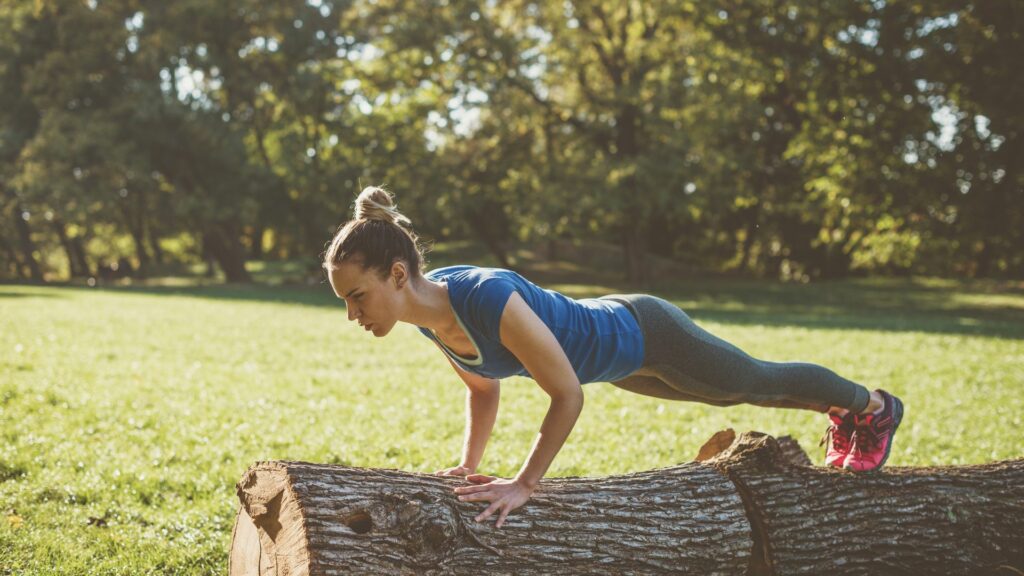Whether you’re a weekend warrior hitting the local trails or mountaineering enthusiast, strength training can help you drastically. It’s not just about the miles you can cover; it’s also about how your body copes with those challenging inclines, rocky terrains, and long treks.
Think about it~ each step on a hike demands more from your body than walking on flat ground. Uphill climbs require power from your legs, going down the hill or mountain puts pressure on your knees, and uneven surfaces challenge your balance. Now, here’s where strength training enters the picture. By protecting your muscles, you not only hike better; you’re safeguarding your body against common hiking injuries.
Building strength isn’t just about bulking up; it’s equipping yourself with endurance. Muscle endurance is a true game-changer on long hikes. Strengthening your lower body, core, and upper body ensures that you can handle prolonged physical effort and carry your backpack without straining your back.
You might wonder, ‘Should I focus on cardio or strength for hiking?’ My take is, sure, cardio is crucial, but ignore strength at your own risk. It’s about finding that sweet spot where both work together, helping you push past your limits on the trail. If you choose something that resonates with you and addresses the rigors of hiking, you’ll be setting yourself up for success.
So that’s the strategy I like to leverage – a well-rounded approach to fitness that prepares you for the unpredictable nature of outdoor adventures. Keep this foundation in mind because next, you’re going to find out about the essential strength exercises that are specifically tailored to make you a stronger, more resilient hiker.
Targeted Training: Essential Strength Exercises for Hikers
Okay- so let’s ramp up your hiking game (pun intended) 😉 with some targeted strength training exercises. These are not just random workouts; they’re chosen selectively to help hikers like you conquer those trails with ease.
Imagine the feeling of powering through a steep incline with almost no difficulty. This is where squats come into play. They are not just any leg exercise; they build a robust base of leg power. Perfect for those challenging uphill stretches.
Deadlifts are also great for hikers because of the benefits for your back. They’re important for a strong, upright posture, something that makes carrying a backpack feel like a breeze, rather than a chore.
Next up- lunges! I’m a huge fan because they promote balance and unilateral leg strength. Working one leg at a time is super important for navigating uneven terrain.
And don’t overlook step-ups. These mimic the act of hiking uphill and are a gold mine for stamina. By the time you hit an actual trail, your legs will be primed and ready to handle extended climbs.
The final exercise I recommend are planks. They might seem simple, but they’re the stealthy core workout every hiker needs. A strong core is your secret weapon for stability, especially when the backpack gets heavy. It’s all about enjoying the hike without the unnecessary strain. I think planks are one of the best overall exercises. Not only does it work your core, but your upper body and lower body all at once. Work up longer stretches at a time and you’re going to see the difference when you’re hiking.
These are the most basic, probably easiest exercises to incorporate into your training. But you also need to recognize your own body’s weak spots. Maybe your calves tire easily, or perhaps your shoulders could use some strength building. Tailor your training to address these, and you’re setting yourself up for a personalized hiking adventure.
Related Article>>>> Preparing Physically for a Long Distance Hike
Integrating Strength Training into Your Hiking Routine
You’re going to find out about seamlessly incorporating strength training into your hiking preparations, without it feeling like a chore. I understand the kind of commitment it takes to get ready for the trails, and I’m here to help you with practical advice that makes a real difference.
Creating a customizable strength training schedule is about understanding your own lifestyle and how exercise fits into it. Choose something that vibes with you, whether that’s workouts at the crack of dawn or fitting in a quick session after work.
Progressing safely and effectively with your exercises means not biting off more than you can chew. You can always adjust your approach down the road, but starting with a foundation and building up is the key to long-term success.
If you want to bring your workout outdoors or prefer staying at home, there are plenty of adaptations for strength exercises to fit your environment. Creativity is your friend here, from using park benches for step-ups to household items for weights.
The strategy I like to leverage is pairing strength training with actual hikes. That doesn’t just mean doing squats while on the trail, but scheduling strength work on some days and hikes on others for optimum recovery and performance.
Don’t worry too much about finding the ‘perfect routine’ from day one. Your first attempt doesn’t need to be your last. You can adjust and evolve your regimen as you gauge what works best for your body and your hiking goals.
Lastly, while you’re exploring and expanding your physical limits, seeking professional advice can be a game-changer. A tailored training plan could transform your routine and hiking experiences, leading to some amazing adventures on the peaks.

